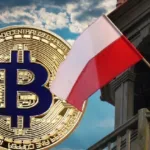Vitalik Buterin, co-founder of Ethereum, used Ethtokyo 2025 keynote to chart blockchain paths, highlighting Asia’s early role in its rise, bold ten-fold scaling targets, and new calls for global collaboration.
Butarin celebrates Asia’s early role at Ethereum and calls for global collaboration
Ethereum co-founder Vitalik Buterin took the stage at Ethtokyo 2025 with a reflection that spans the humble beginnings of blockchain, Asia’s pivotal role in Ethereum’s growth, and his vision for the future of the network. His speeches are intertwined with history, personal insights and a roadmap for future prospects. It adopted Ethereum’s mission to bridge East and West communities.
From the Roger Vere’s time to institutional adoption
Buterin opened with a look back at the early days of blockchain. He recalls an era ruled by early Bitcoin evangelists such as Roger Vere, and highlights how grassroots enthusiasm and personal beliefs laid the foundations of what later became mainstream adoptions. Over time, institutional involvement began to form ecosystems, bringing both capital and complexity.
Layer 2, interoperability, and scaling goals
Technically, Butarin reiterated his strong belief in future tier 2 solutions. Not only does it improve Ethereum’s scalability, it also improves interoperability across the ecosystem. He went further and declared an ambitious target. Ethereum aims to scale 10 times by next year, pushing throughput and accessibility while maintaining decentralization and security.
Early contributions in Asia
The recurring theme of Butarin’s remarks was the role of Asian character in Ethereum history. He recalled how many of the earliest contributors welcomed from the area.
The Pyethereum client was developed in China.
Early volunteers began to translate Ethereum white papers and technical documents into multiple Asian languages. Asian communities played an important role in raising awareness and hiring early adopters. Buterin highlighted how such grassroots efforts helped Ethereum move from ideas to global phenomenon.
Cultural contrast: China and Japan
Buterin also reflects the contrasting dynamics between the Chinese and Japanese developer communities. In China, pushes were quick, large, and often linked to large projects. In contrast, in Japan, developers demonstrated the ability to adopt emerging technologies early.
He pointed out projects like Tacos, a Chinese Farcaster brand.
Reset technology patterns
Buterin zoomed out to highlight one of the repetitive patterns he noticed with technology. New breakthroughs often “reset” ecosystems. For example, Zero-knowledge (ZK) technology suddenly unlocked solutions to long-standing issues. He pointed out how the ideas that dominate the 2010s differ significantly from those of the 2020s, predicting that the 2030s would lead to yet another paradigm shift.
A call for a wider builder
Core developers remain essential, but Butaline has urged the community to expand its participation. Ethereum’s advances should not be relied solely on the shoulders of core developers, he said. Instead, researchers, app developers, and new contributors need to actively form ecosystems.
He encouraged Asian developers and researchers to make Ethereum more efficient, safe and decentralized, and focus on core technical issues. He even suggested that AI could be a powerful tool in learning and onboarding, particularly in the technical realm.
The bridge between the east and west
Buterin has returned several times to the theme of east and west bridges. He argued that the healthiest communities are communities that emphasize common interests and the original values of people, rather than being silent by geography or politics. Ethereum, in his view, is not only possible for global collaboration, but remains the platform that is needed.
The Future of ICOs, DAOS and Funding
Interestingly, Butarine revisited the controversial history of its first coin product (ICO). While acknowledging their flaws, he argued that ICOS allowed the project to be essentially global in a way that venture capital struggles with replicating.
“The VC era,” he suggested. “There are restrictions due to regulations, and to be honest, VCS can make it robust.” Instead, he believes the future is about reviving ICO and DAO-based governance, focusing on optimizing community-driven funding mechanisms.
Looking ahead
Vitalik Buterin’s address at Ethtokyo 2025 was a call for both history lessons and meetings. From recalling Ethereum’s early Asian formative role to setting bold scaling goals for the future, his message was clear. Ethereum thrives when we build a bridge between technology, generations, East and West.










